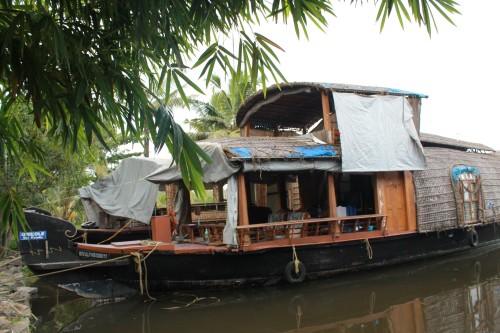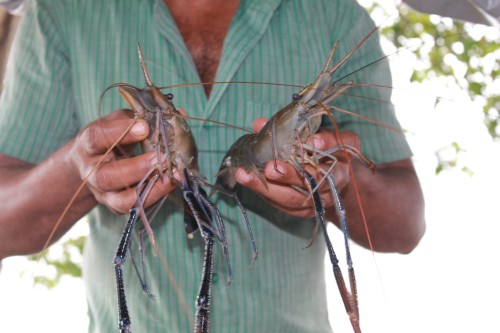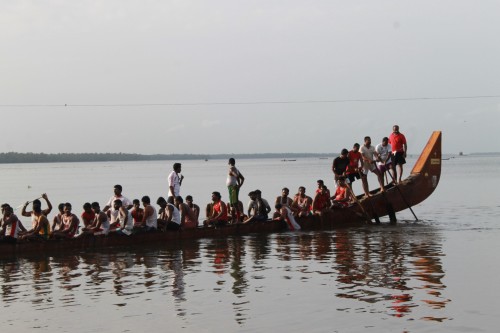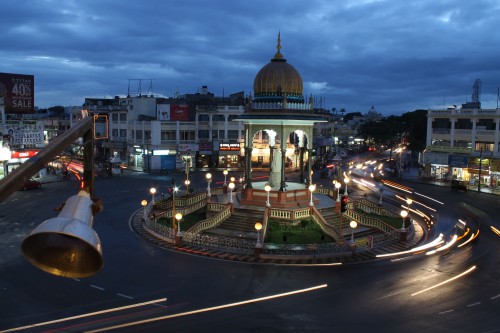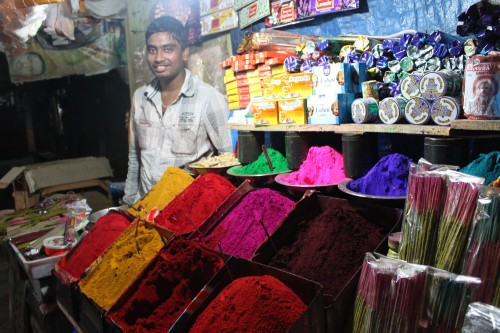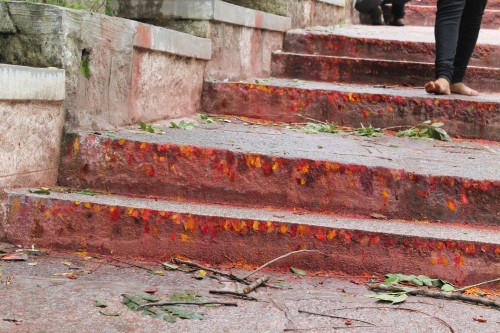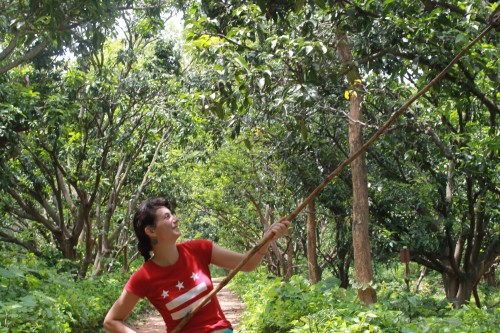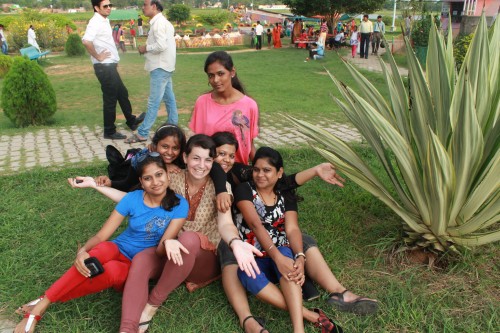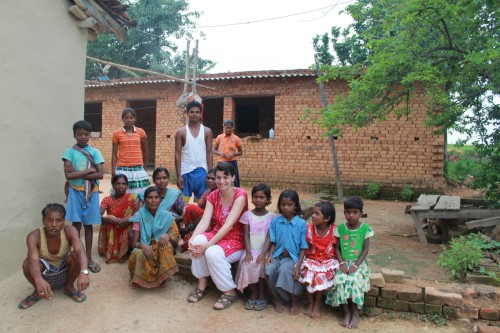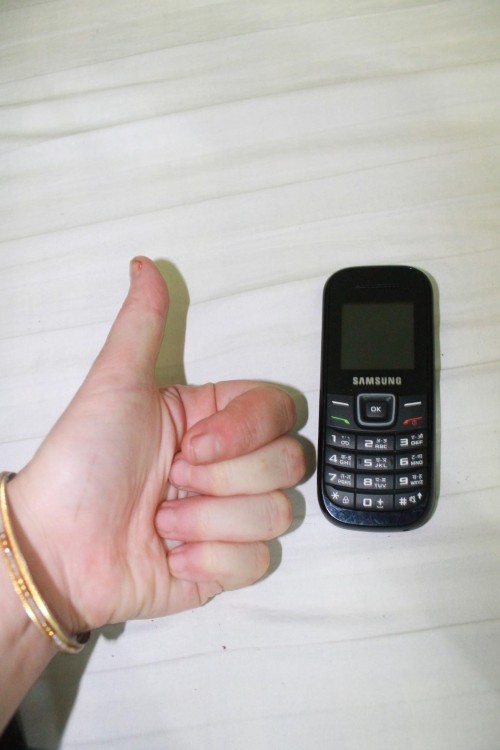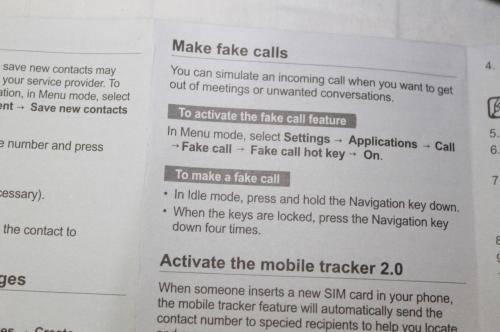The events leading up to The Most Absurd Day of My Life started five days earlier, when a palm-reading principal peered into my lifeline and announced that I have one year to get married.
Here’s how this started: I go with Daduji and Vincent, our driver, to Khalari to place an order for cement. Dadu had decided to replace part of the branches-and-wire fence surrounding the JV campus with a real brick wall. I had nothing to do with this mission, but tagged along as I was bored and a ride anywhere sounded like a great adventure.
To feel productive, I ask if we could stop and interview some local doctors. Dadu says sure, and we head to one doctor’s office, where we end up interviewing his assistant since the good doctor has left for the day.
In between scribbling notes on how many malaria patients the clinics treats each week, I notice a man across the street watching us from over his fence. He’s talking on his phone and gesturing excitedly. He waves at us a couple of times. I have no idea what this means, but when I finish the interview, Dadu turns to me and says, “Shall we go talk to this curious person who is interested in us?”
Trot into the house of this random strange man? …Sure? (I later learn this man is not a random stranger—Dadu has met him several times before.)
Inside the man and Dadu speak enthusiastically for a few minutes. He introduces me and explains what I’m doing in Jharkhand. Just when I’ve gathered from the fairly large bookshelf behind the man that he’s well-educated—there are two volumes of Greek tragedies in English—the man whips out his computer and asks Dadu for his date, time, and place of birth.
Belief in horoscopes is not uncommon in India—I met a man in India who gave “astrologer” as his profession—but I’m a little surprised when Dadu nods along with the resulting report about his life that the computer churns out, saying in English, “Very accurate.” I’m not surprised at all when the man turns to me and asks for my vitals. My own chart is wildly off-base. “You have no brothers.” “I have two.” “Your father has a digestive problem.” “…I…don’t really discuss these things with him.” “Your mother has a breathing problem.” “…Not that I’m aware of?”
He shakes his head and declares that my time of birth doesn’t exactly match up with the resulting chart, or something, so, that explains it.
I’m struggling to hold back an epic eye roll when Dadu urges me to show the man my palms. “He can read them,” Dadu says. I tentatively sit next to the man, who studies my palms for a few minutes.
For all my eye-rolling, what he tells me next is actually eerily accurate. “You’re doing research work now, just numbers and survey, but you can do much more creative things,” he says. “Writing, telling stories, oration.” I raise an eyebrow. “You have…mind is always changing. Not stable. First you want to do one thing, then other times you are wanting to do other things.” I raise both eyebrows. I don’t know what’s going on here, but if it’s all guesswork, this guy is making some phenomenal guesses.
So I’m a little alarmed when he also announces that “now has started your marriage time. You have one year to get married. That is the lucky time.” This would be nothing short of a miracle, as I don’t even have a boyfriend, but I decide not to volunteer this.
As our visit is ending, the man takes a call on his cellphone. In English, he discusses a class schedule. “He’s a principal, this man,” says Dadu. “Of a very good school.”
And he’s invited Dadu to speak at this very good school a handful of times before, so Dadu is not surprised when Mr. Principal-ji calls him on Friday and asks him to speak at “some event” the next day. “What event?” I ask over our lunchtime rice and dahl.
Dadu looks sheepish. “To be honest, I’m not really sure,” he says. “Something about the scouts, I think. I don’t know.” We both laugh. “I told him I was very busy, but he begged me, so I agreed to come.” I spoon some karela, or bitter gourd, into my rice. “Would you like to come too?” he asks me.
Why not? “Sure,” I say.
“You don’t have to come if you have something else on your schedule.”
“I have nothing to do.” Sushil has left town for Ranchi already, so I’ve lost my translator and driver for village interviews. “I definitely want to come.”
“Okay,” says Dadu. “I will tell them to be ready for a two-hour speech from the great Miss Chelsea-ji!” We both laugh again.
This is basically the last time we talk about the event until the next morning, when Dadu eyes my brown salwaar suit over breakfast and asks if I have anything shinier to wear. “Not really,” I say, my alarm growing mildly. I rebraid my hair after breakfast, hoping that’s enough and wondering exactly what this event is.
Disney fans: Do you remember the scene in Aladdin when Jasmine is marching Aladdin up some stairs and talking about how he’ll be sultan one day, and the nervous Aladdin, who clearly is unprepared for this turn of events, says, “Sultan?” and then she shoves him out onto a balcony to greet his future subjects and there are literally thousands of people waving at him and cheering?

That’s exactly how I feel when when pull up to the D.A.V. School in Khalari. In a huge field in front of the school, there are literally hundreds of students sitting in neat rows facing a central stage. My later count of the rows and columns puts the estimate at closer to 1000. The principal, along with a cadre of hangers-on, greets us with a jolly grin and a hearty “Namaste!” at the door. He’s wearing a Western suit and has oiled his hair.
“What is going on,” I whisper through my teeth to Dadu. He doesn’t answer. Just inside the school gate, a pair of girls holding plates approaches me. One thumbs a tikka, a spot of holy red powder, onto my forehead while a man in white hum-chants a prayer. The other girl tosses a confetti of flower blossoms over my head. I press my palms together in front of my chest in thanks and try to smite the obvious panic from my features.
Inside the principal’s office, where we’re served snacks and tea by another pair of students, I meet two distinguished social activists, who, like Daduji, are also pushing 85 and also have spent their lifetimes trying to improve the lives of their rural countrymen.
“So,” I say, “What’s today’s event all about?”
“Yes,” Dadu jumps in, seeing the opening I’ve made. “Chelsea is wondering what today is all about. Please tell her.”
“It is the closing ceremony for the Bharat Scout and Guides,” the principal says. “They have just completed a week of training. They are…you can say, they do social works.”
“Ah,” I say. A week of what? The who? One of the Indian social activists is eyeing me with a look of suspicion. I smile weakly and chug my chai.
Just when I think I can’t feel any more out of place, the five of us—the trio of octogenarian Indian heroes, the principal of one of the best schools in the district, and…me—are escorted back outside and across the field by an honor guard of uniformed boy scouts and girl scouts. One of them shouts orders and his beret-clad compatriots take a set of mismatched marching steps sideways and forward, their white-gloved hands swinging like off-set pendulums.
And then we’re…escorted onto the stage. In front of the 1000 students. There are 5 chairs, and one of them is for me. Among the many things I am serenaded with in the next few hours is a personalized program of the morning’s events, stamped with the words, “PROGRAM GUIDE: MISS CHALSEA, SPECIAL GUEST.”
I try to look as serious and nonplussed as possible throughout, but I actually burst out laughing when I’m handed the program guide. And also when I’m given flowers. And a giant ribbon, like one of those prize ribbons handed out in horse races. ….And a trophy. One of those gold-shellacked, sequin-encrusted plastic things you give to Little League players, only shaped less like a ball player and more like a dinner plate. I’m trying to give everything due respect, but the whole thing is so preposterous and over-the-top—I’m being given a trophy, for crying out loud, for doing pretty much nothing but showing up on a Saturday morning and remembering to brush my teeth—that it’s hard not to find it hilarious.
Dadu later explains to me that all of this is done to honor him. He asked to bring a guest, and in India, as I am repeatedly told, the guest is a god, and he is a person to whom one gives much respect, so his guest must be accordingly respected. When he tells me this, I think of how one Indian described the difference between the U.S. and India: “In your country I think it is the system that is more important than the individual, na? Here you can say it is the individual that is more important than the system.”
I don’t know this at the time, though, as I’m watching scouts march a color guard around the field, climb into acrobatic pyramids, and perform dances to “Jai Ho!” and another popular Indian top 20 hit. All of this is done facing the five of us on the stage, rather than the 1000 students who are sitting cross-legged in the mud, which strikes me as odd given that this is ostensibly an event honoring the successes of the scouts in the crowd. But, this is India, where hierarchy—as evidenced by Dadu’s blank check to bring me—trumps all, and we’re the guests of honor.


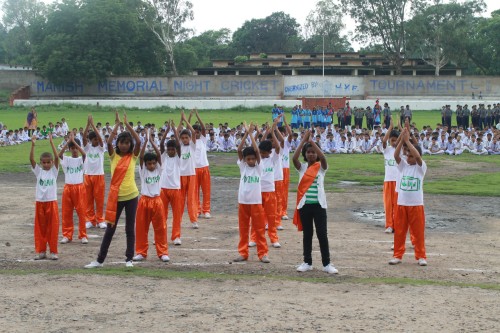
Eventually, Dadu makes his speech, and it’s a really good one. He doesn’t feed the students the typical, “You guys sure are great! And so is our country!” patter that both Indian and American pontificators are prone to serving up. He starts by reading a quote in Hindi. I don’t know what it means, but he then says he feels ashamed to read this description of India, “because of the way our country is today.” He spends the next 10 minutes berating India’s politicians for their greed and chastising Indians in general for failing to improve the country’s character, saying too many think only of earning money and not of improving their society. “Our country is not known for its honesty, fairness, and charity towards others.” he says. “It is known for greed and corruption. No one even follows the traffic laws here.” It’s hard to read the students’ faces from the stage, but the older ones are watching him with rapt attention. He ends on more of an up note, however, saying that when he sees these young students, “my heart feels hope again for the future of our country.”

We all applaud. “Great speech,” I whisper to him when he sits down again next to me.
He nods vaguely, says something to the principal, then turns to me. “You’re next,” he says.
Oh. So our joking around about me making a speech here wasn’t joking around after all. It had occurred to me on the ride here that that might be the case, so I’ve given this some thought, briefly. But mostly I’m going to wing it.
The emcee gives me a comically incorrect introduction, announcing that I am “studying education” and will soon be “going for her PhD.” I am then given an “escort” me to the podium, equally comical as it’s about three steps from where I’m sitting.
I blink at the crowd. A thousand students are looking at me.
“Namaste,” I start. The crowd responds in a mixture of Hindi and English, grinning and waving. I thank everyone around me whose name I can remember, and the students, for having me. Then I give a speech that goes something like this:
“You know, I’m not Indian, so it isn’t really my place to say what India should and shouldn’t do. That’s not why I came here. I came here to try and work with Indians who are interested in helping people who need help.
“The first time I came to India, three years ago, was honestly just to explore, with a friend of mine from college. We came to teach English, but also to travel and do tourism things, see the Taj Mahal. To be honest with you, the first two weeks I was in India, I thought, ‘This place is crazy.’ I was in Delhi, you know, and I thought, ‘It’s so crowded, so dirty, so overwhelming, and I don’t know how to get anywhere or do anything.’
“But I was here for two months, and when it was time to leave, all I could think about was when I would come back. You have a very beautiful country with very beautiful people. And—so many colors, sights, sounds. So many different cultures. It’s really a very exciting place, a very special place. It does have problems, as Upadhyayaji just described. But, you know, my country also has problems. And my heart is very glad to see all of you, here, in this organization dedicated to social work and helping others. Looking out at all of you, I have every faith that you will all go on to do great work that improves your society and your country—if you remember to always keep in mind the goal of leaving this world a better place than you found it. I came here to help my friends at Jagriti Vihara open a hospital for the rural people here—to help people who need help.
“And you can all do great things, as long as you stay committed to to leaving this world a better place than you found it. Thank you all again for having me.”
It’s not a super original message, but let’s keep it simple, I figure. Dadu likes it — he later says to me, “You know, that was a good speech you made. You did not let me down.”
I feel really glad to hear that.
Hopefully, sometime in the next year, back in New York, when I’m spouting off about something else, ideally a shade more prepared, my future husband will be just as impressed.
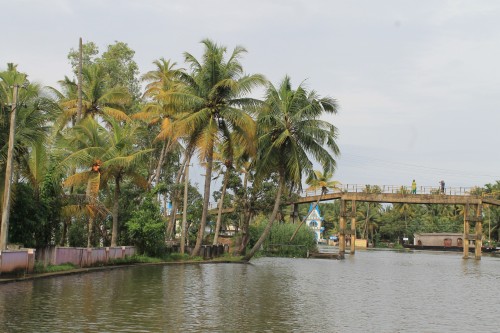 Erin and I arrived in Kerala via night bus (my least favorite form of transportation ever. Kerala is very developed in many ways, but its roads are definitely not. We “slept” the whole night in 10-minute snatches in between bone-jangling potholes). Waking up at sunrise that morning was magical. I wasn’t thinking, “This is it?” Instead, all I could think was, “I made it. I made it.”
Erin and I arrived in Kerala via night bus (my least favorite form of transportation ever. Kerala is very developed in many ways, but its roads are definitely not. We “slept” the whole night in 10-minute snatches in between bone-jangling potholes). Waking up at sunrise that morning was magical. I wasn’t thinking, “This is it?” Instead, all I could think was, “I made it. I made it.”
